Three
EARLY COMMERCIAL ACTIVITIES
Before it became a park in 1915, the Rocky Mountain National Park area was home to a number of varied commercial activities. No one knows exactly how many people poured into the Estes Park area in the 1870s and 1880s, but more and more arrived each year. Adventurous travelers loved what they found and wrote about what they saw, which encouraged others to venture into Colorado. Some extolled the magnificent scenery. Others wrote about the fabulous hunting and fishing. To accommodate visitors, many of the early settlers opened and operated popular guest facilities.
In addition to successful tourist businesses, hunting, ranching, mining, and lumbering also prospered. Some of the earliest visitors to the park area, such as the Earl of Dunraven, were lured by the possibilities of hunting. In fact, the earl eyed the land for a private hunting preserve. Others saw hunting not just as a sport, but as an economic enterprise, selling the meat of game animals for profit. The earl and many others who caught their first glimpse of the Rocky Mountain Park area saw its potential to support dairying and cattle ranching. In the Kawuneechee Valley on the western slope, prospectors came in search of gold and silver. Large veins of ore had been found elsewhere in the Rockies. Why not here? As more and more prospectors came, mining towns grew up. Some boomed and busted within two or three years, changing from bustling camps to ghost towns. Others lasted. In either case, lumbering and sawmills were needed to build the homes and stores. All of these commercial activities were carried out from the 1870s until the time the land was set aside as a park in 1915.
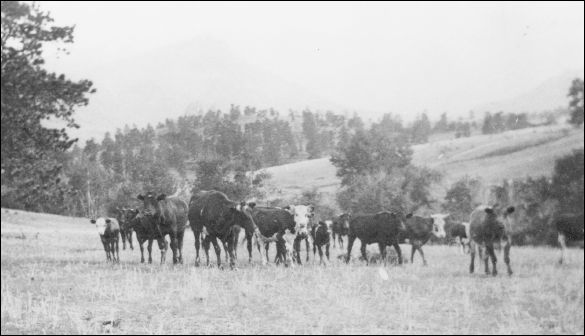
The Earl of Dunraven, linked to English nobility, was enormously wealthy. Although he failed in his original plan to purchase all of the Estes Park area for a private hunting preserve, he did succeed in building and running a hunting lodge, a hotel, and a ranch, and in introducing Swiss cattle. This photograph shows a herd of cows at what was locally called “The English Dairy.”
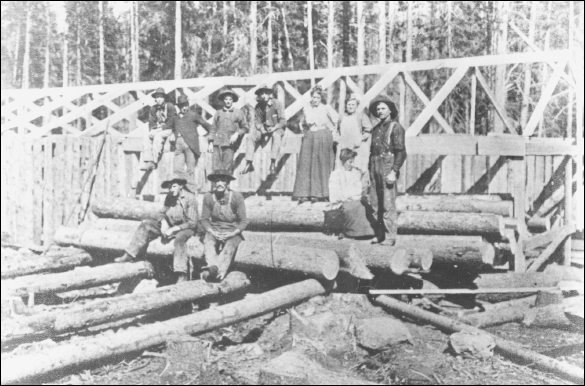
Although probably most of the people who came to Colorado during the Pike’s Peak gold rush came to seek gold, many came for other reasons, or at least turned to other occupations when mining proved too much work for too little gain. Some settlers ran stores to meet the needs of miners. Other ran sawmills. The Dan Griffith Sawmill pictured here, which operated at Bierstadt Lake in 1907, is typical.
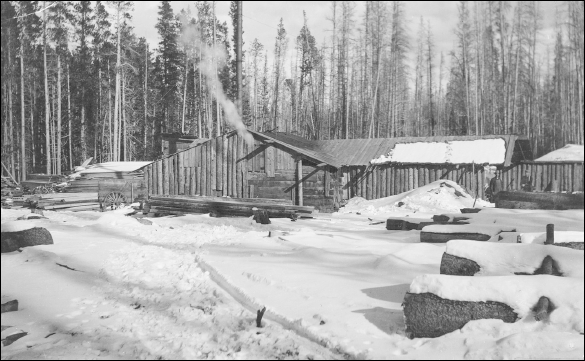
Small settlements in the Rockies sprang into existence overnight. There was a frenzy of building as farmers, ranchers, and storekeepers poured in. To meet the needs of new residents, many sawmills ran all winter long. Where needed, lumber was even taken from the mills to building work sites by sleds. This picture shows the Griffith Sawmill near Bierstadt Lake during the winter of 1910.
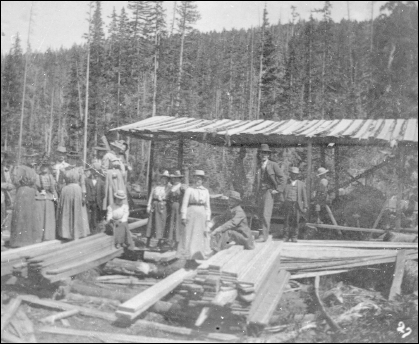
Historians estimate that supporting the mining frontier required five times the number of people actually working in the mines. Ranchers supplied chicken, meat, and dairy products, which were sold in stores that required shopkeepers. Once houses were built, women came to live in the frontier towns. In this picture, some ladies make a day’s outing of visiting the Griffith Sawmill at Bierstadt Lake in 1910.
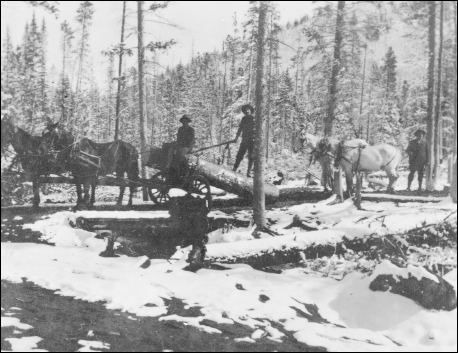
Lumber was needed for building homes and stores, for use in mines, and for railroads that were extending into the major mining areas. Crews of men worked to fell huge trees, wrestle them on to horse-drawn wagons, and haul them to lumber mills. Here a crew of men is hauling logs at Hollowell Park.
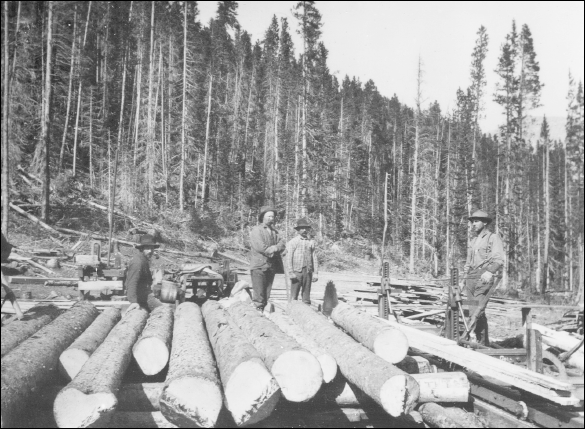
The earliest cabins and houses built by settlers used logs with foundations of stone or dirt. These small logs were untrimmed. The next step up was to use logs flattened on two sides with joints and notches cut to the builder’s preference. Larger buildings could be erected when sawmills were in operation. This 1900 photograph shows the sawmill crew at Hidden Valley.
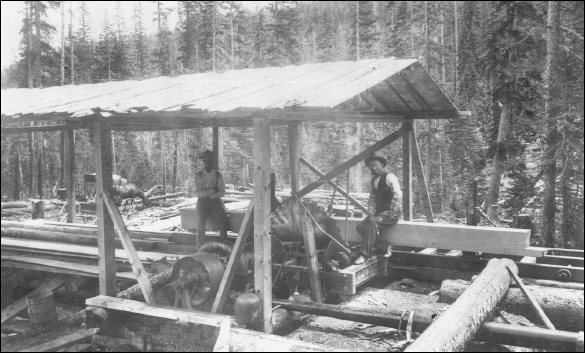
Many of the Rocky Mountain National Park area’s early and successful pioneers added sawmills to the list of operations in which they were involved. Alexander MacGregor operated a sawmill off and on until the time of his death in 1896. Abner Sprague ran the sawmill that is pictured in this 1895 photograph.
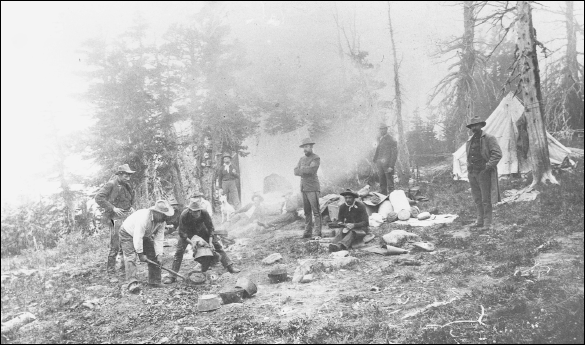
The lure of rich lodes of silver drew prospectors into the area near Grand Lake in the 1870s and 1880s. Grand Lake became a distribution point for such new mining towns as Lulu City, Gaskill, and Teller. Mining tents and new cabins sprang up throughout the mountains. This is a picture of the Ezra Kauffman mining camp in Lulu City in 1882.
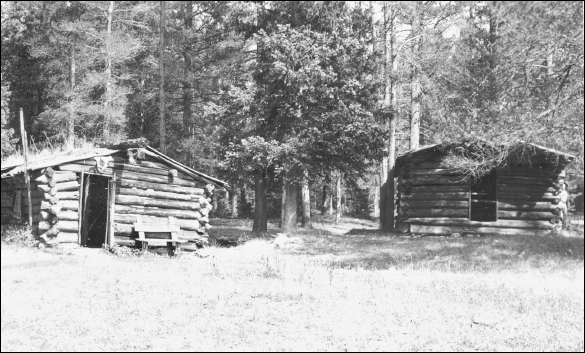
Gold and silver strikes drew men like Joe Shipler to come prospecting. In 1879, Shipler staked two promising silver claims on the slopes of Shipler Mountain. He settled along the Grand (Colorado) River near his claims and built several log cabins and developed his mine. This picture of the Shipler cabins on the Lulu City Trail was taken by ranger H. Raymond Gregg in 1938.
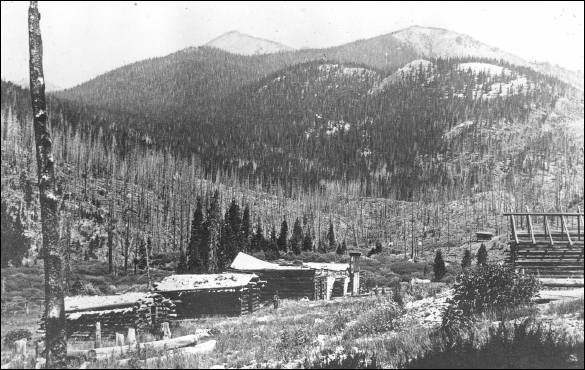
There were plans for Lulu City, located in front of Thunder Mountain, to grow to 100 blocks, each with 16 lots, but this grand dream was never realized. Although over 40 houses went up, as well as a hotel, and miners were busy everywhere, the mining companies found they could not make a profit on low-yielding ore. Miners deserted their claims, and by December 1883, the boom had ended.
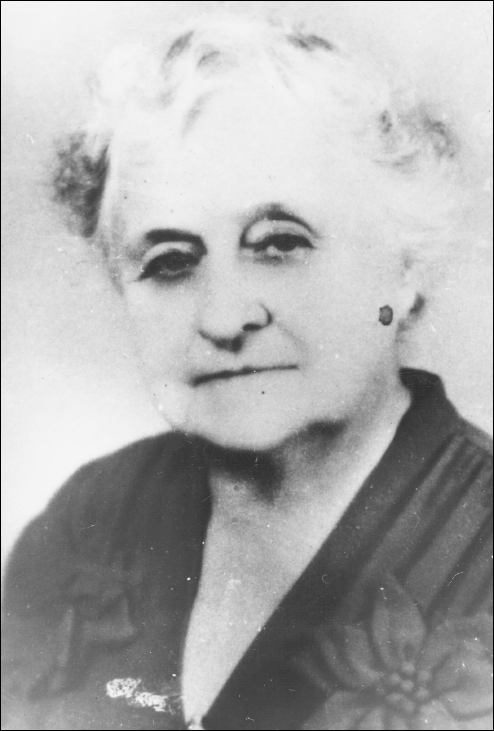
During the Colorado mining boom, there were some men who could see that there were ways to make money other than mining. Big profits came from real estate speculations and promoting the building of new towns. Two such promoters from Fort Collins were William B. Baker and Benjamin Franklin Burnett. There appeared to be rich lodes of silver in the area. Why not cash in by building a boom town? These two men formed the Middle Park and Grand River Mining Company to create Lulu City. By 1880, Burnett had a 160-acre town site, which he named for his daughter Lulu, who was reported to have been a great beauty in her youth. One resident of the area described Lulu as “the most beautiful girl I ever saw.” This is a photograph of Lulu Burnett taken many years after Lulu City, which bore her name, had become a ghost town.
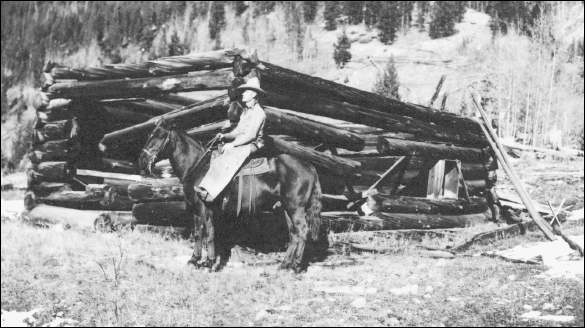
Here are the remains of a cabin in Lulu City. During its short heyday, Lulu City bustled. In addition to the mines, two sawmills ran day and night constructing cabins and stores. By 1881, there was a barbershop, a butcher shop, a clothing store, several grocery and liquor stores, and a dairy offering butter and milk. By 1886, Lulu City and all the other nearby mining towns were abandoned.
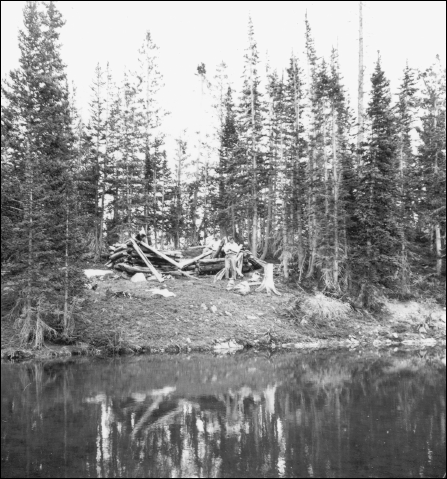
Brawling miners, no longer welcome in Lulu City, went only a short ways off and organized another mining camp called Dutchtown at timberline on the sides of Lead and Cirrus Mountains. Dutchtown lasted only slightly longer than Lulu City, and miners vacated their cabins in 1884. These remains of an abandoned Dutchtown cabin were photographed by ranger D. Ferrel Atkins in 1964.
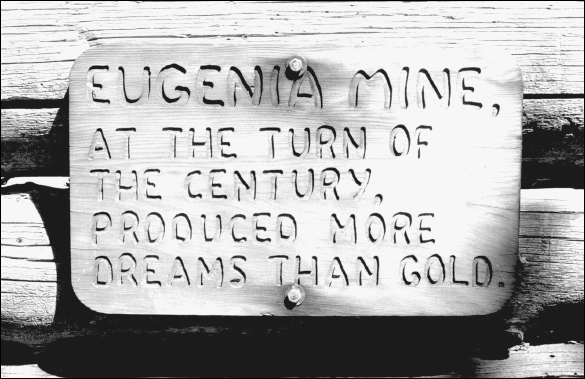
This photograph shows the Eugenia Mine sign. The Eugenia Mine was located at 9,908 feet about six mines north of what is now Allenspark, Colorado. This mine was worked by Carl Norwall and his family. Norwall dug more than 1,000 feet into Battle Mountain trying to make his fortune but was rewarded with no ore of any value.
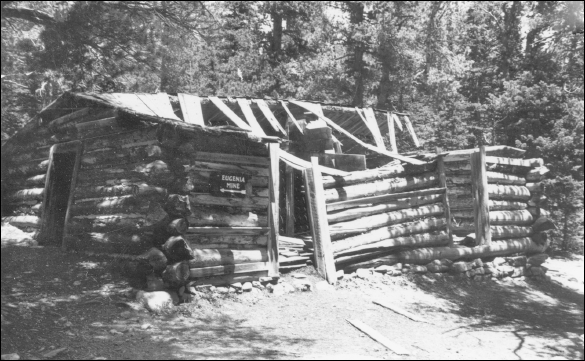
Carl Norwall built a fine cabin for his wife and two daughters, complete with a piano, only a few hundred feet downstream from his mine. Visitors today to Rocky Mountain National Park can take a 1.4-mile hike from the Longs Peak Ranger Station to the ruins of the cabin and mining machinery at the Eugenia Mine site.
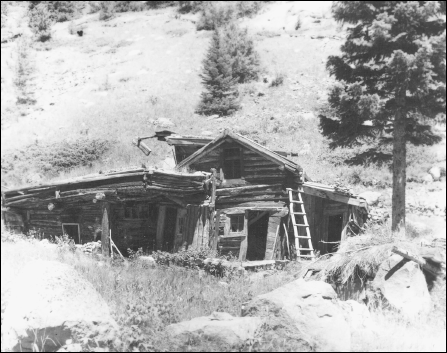
This is the mining cabin of eccentric William Clyde Currance, known as “Miner Bill.” Wild tales abound about this man who came to Estes Park in 1883. Because of his bizarre behavior, he spent time in the Colorado State Insane Asylum. On release, he filed two mining claims on the west side of Mount Chapin and built an elaborate trail to his mine and two cabins.
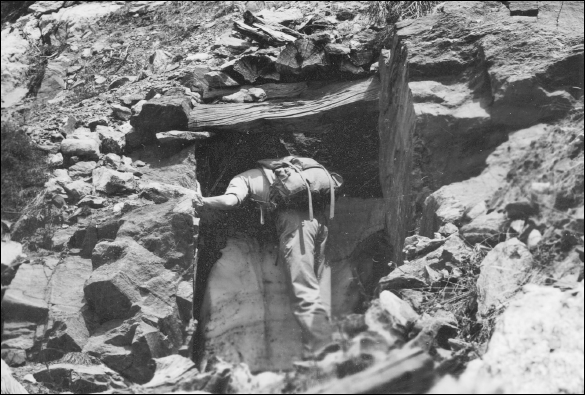
In 1962, park superintendent Roger Contor photographed someone looking into the Bill Currance Mine shaft. Miner Bill fought with the government during the building of the Fall River Road between 1913 and 1921. He finally went to live in Estes Park, where F. O. Stanley gave him odd jobs. After he was missing from town for a week, a searcher found Miner Bill dead outside his cabin.
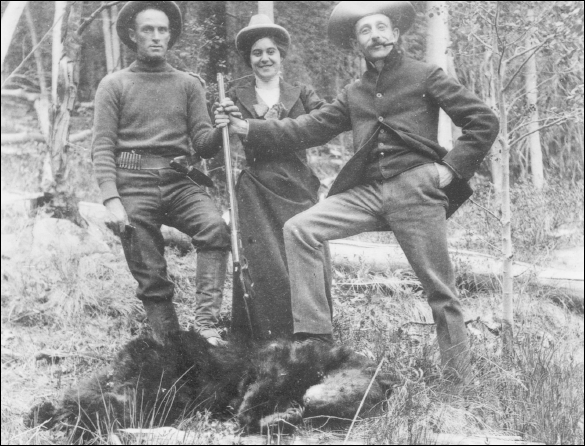
Early pioneers in the Rocky Mountain National Park area made money by selling dressed game and skins in Denver. The earliest pioneers, Joel Estes and his family, went into Denver every two months to sell deer, elk, mountain sheep, and antelope. This bear hunting picture shows James Howard and Mr. and Mrs. Kline with their bear. Mr. Kline, with moustache, is on the right.
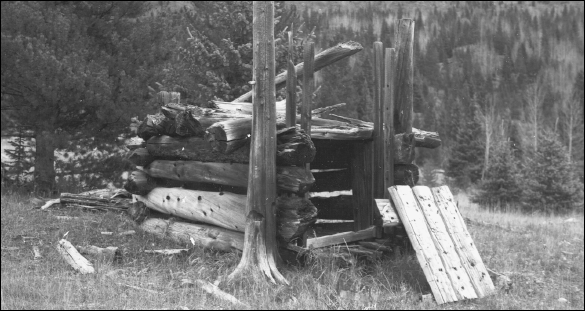
Sometimes troublesome animals are trapped and moved. Ranger Jack Moomaw trapped a 300-pound black bear that had rummaged around his cabin in the summer of 1932. The bear was taken to Chapin Pass and released. This is a picture of a bear trap near Lulu City in 1947.
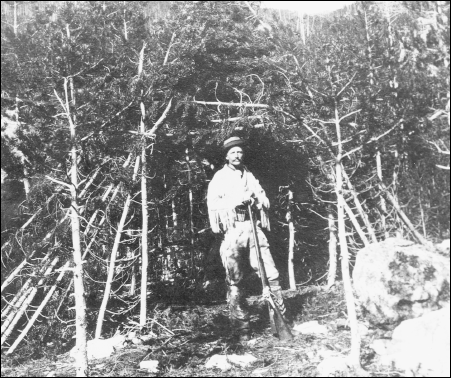
Note the large-caliber rifle being held by buckskin-clad Mr. Harmon as he stands in front of his hunting shelter. Hunters in the late 1800s and early 1900s, meeting the demand of settlers and prospectors for meat, reduced the herds of bighorn sheep and elk from their early levels of thousands of animals to only a few hundred by 1912.
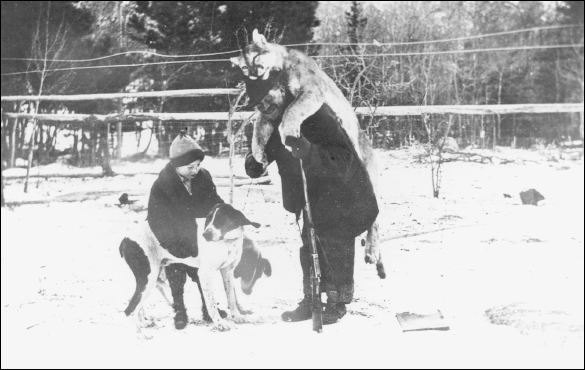
In the early years after the establishment of Rocky Mountain National Park, many of its rules regarding park wildlife were not clearly refined. In some cases, hunters were paid to eliminate predatory animals like mountain lions so that elk and deer would be protected and thrive. This 1922 photograph shows John Griffith with a mountain lion.